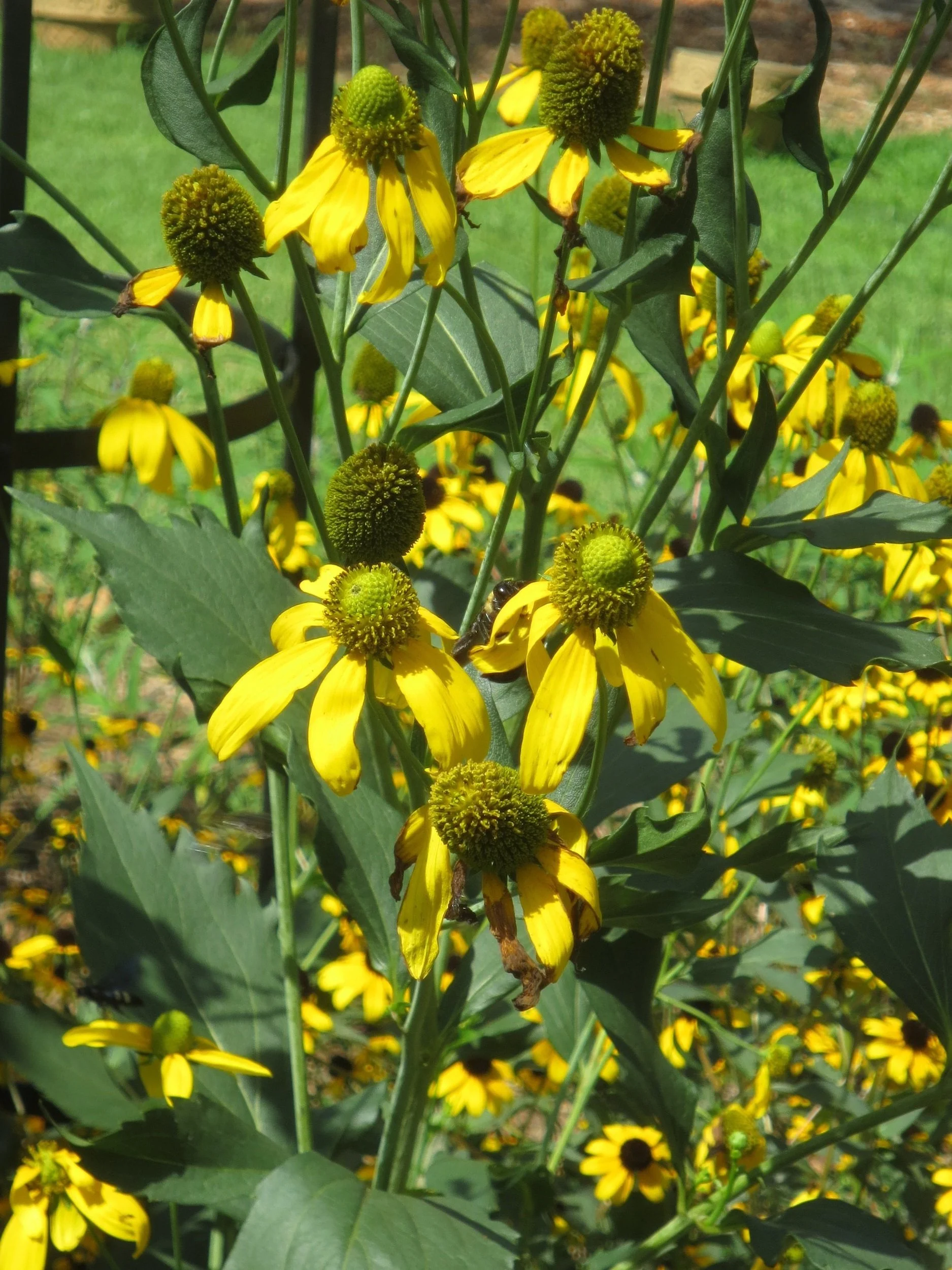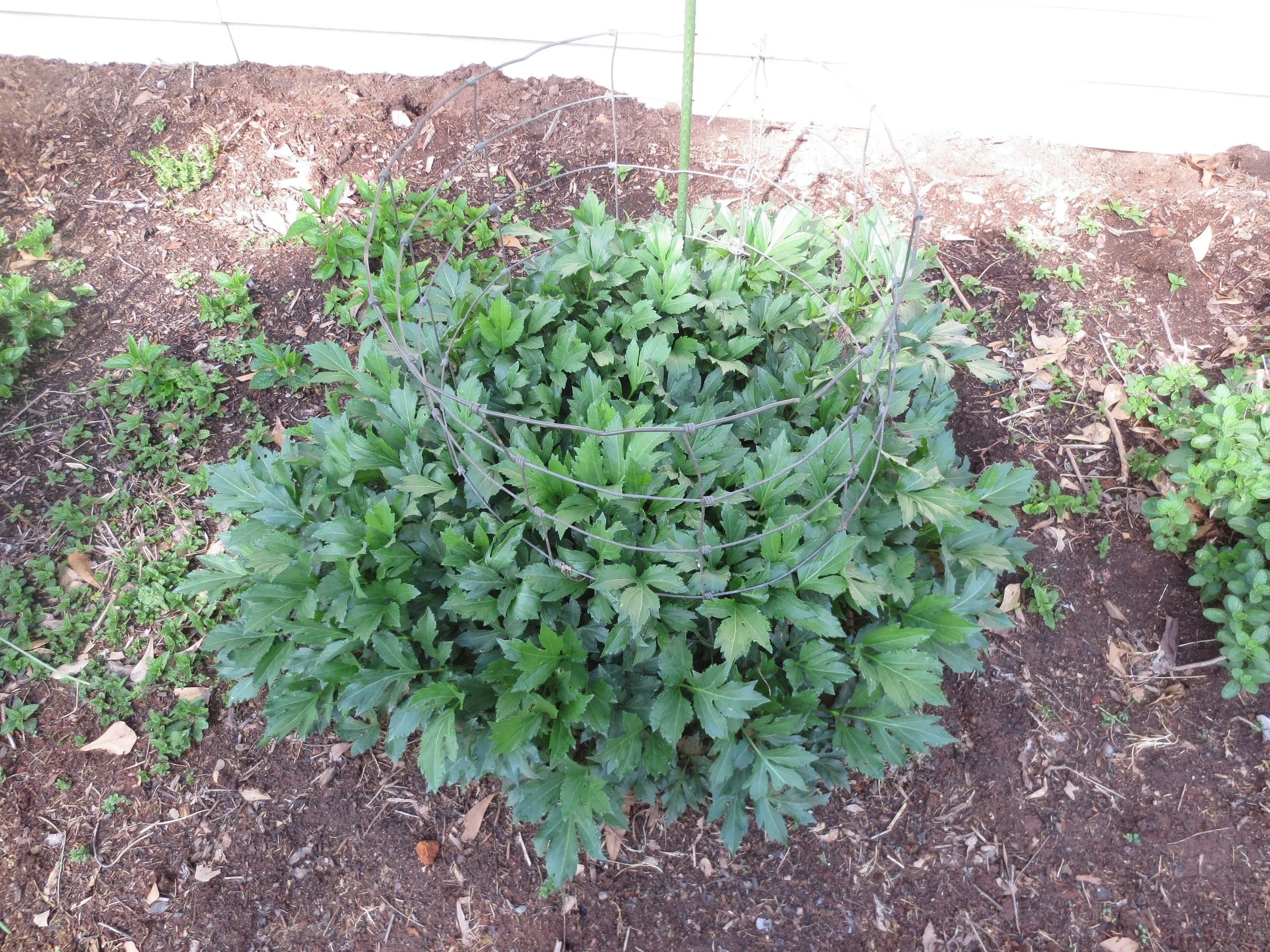Say “coneflower” to most gardeners, and they mentally picture purple coneflower, Echinacea purpurea. Purple coneflowers, and all the other colors, are beloved by gardeners for their heat tolerance, ease of culture, and pollinator attraction. In the case of Cutleaf Coneflower, also known as Green Headed Coneflower, this image is completely wrong. Despite the common name, this golden-flowered giant is a Rudbeckia, not an Echinacea. Rudbeckias are widely known by the common name, black-eyed Susan. Like Echinacea, Rudbeckia tolerates heat, humidity, and moderate drought.
I received my first Cutleaf Coneflower, Rudbeckia laciniata ‘Herbstonne,’ from a friend who divided hers. She told me that it was a tall plant that started flowering in early summer and continued blooming until frost. The first year mine reached a height of three feet. Every year thereafter it grew to at least six feet, and one year (lots of rain) even topped out at eight feet tall. True to reputation, this plant produces enormous numbers of yellow flowers from May to frost. It is hardy from zones 3 to 9. It will grow in any soil type and any pH level, in full sun. Stems die to the ground with the first freeze, leaving a collar of green basal foliage at ground level.
I learned that Cutleaf Coneflower’s tall height paired with numerous flowers results in spraddling, a most inelegant way to describe sprawling stems. I experimented with cutbacks early in the season, and discovered that two cutbacks, a tip pruning when stems reach a foot tall, and then a cutback of several inches when they reach two feet tall, will result in a shorter, stockier plant. I used cages fashioned from scraps of fencing to surround each plant, further supporting the stems and giving me a visual reminder when it is time to divide.
Plants spread by underground runners. With time, they will become so congested that the middle will die out. I have included two photos, taken a year apart, as plants emerge in the spring. The need to divide is evident in the second photo. I only irrigate during the worst droughts. Water restriction helps slow down spread by roots, reducing the need for division.
Apart from division every third year or so and the removal of dead stems in spring before new growth starts, there is little maintenance required. I remove the dead flowers from most of my perennials, but not this one. You could remove flower heads once the petals drop to force more flowering, but I allow most spent heads to remain on the stems. The bare green heads are not unattractive and they bring in bird visitors, especially goldfinches. Deer ignore mine, which is an added bonus.
Tall Cutleaf or Green Head Coneflowers at the back, with typical Black Eyed Susans in the foreground.
Prominent green heads are surrounded by slightly-drooping yellow petals.




